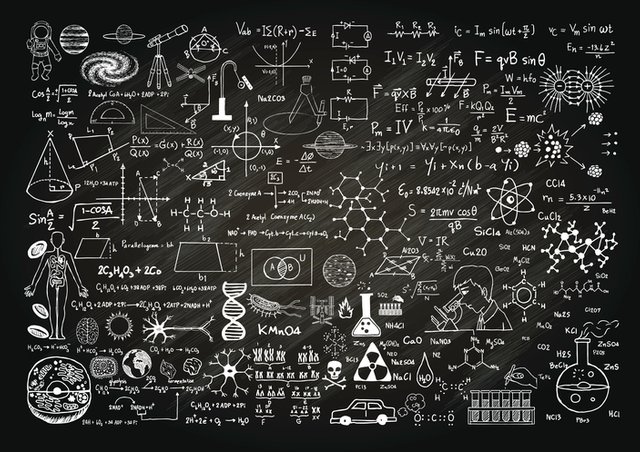Approximation in Physics
Hello Steemians, hope you had a great day. Today, as my first post, I want to describe about various approximations in physics and its importance.

When you model real physical situation, there may be a large number of aspects influencing the situation. If we consider all the factors, the problem becomes complicated. So, we neglect less influential aspects. In many problems, we neglect air resistance. You will see lots of approximations in the field of optics. You may feel these approximations are arbitrary,but, how it fits to the the real physical situation is surprising.
i. Measurement
Imagine you are given book, and asked to measure the thickness of paper. You simply can’t, without very precise and accurate tools. Here is an idea; consider all paper has equal thickness. This is not necessarily true, but approximate. Measure the width of the book and divide by the number of pages. See how an approximation helped?
IMG_2330.JPG
(picture, taken by iphone 5s)
Not only that, the error gets divided by the number of pages too! Let's say there are 100 pages and measurement is 3.5 cm with an error of 0.1 cm. Then 1 page is 0.035 cm with a reduced error of 0.001 cm. But if you measured only 1 page, you still get 0.035 cm with an error of 0.1 cm.
Theoretical Simplicity
Consider an iron piece lying in the table. The total forces on the iron piece may be many examples:
Source: www.bbc.co.uk
i. Gravitational force by each of the objects around it, stars, planets and everything having mass.
ii. The force by the blowing of wind.
iii. Magnetic forces due to various magnets in the world.
iv. The frictional force between the surfaces. etc.
If we consider all the forces, the equation will be complicated. If we consider only important parameters and the answer would be good enough then, we simply neglect other less influencing parameters.
Generally, in mechanics problems, gravitation and friction forces are very important to consider. Compared to gravitational force between two unit masses having equal charge e, the electrostatic force is way greater. So, unless otherwise mentioned, we neglect gravitational force in electrostatic problems.
Mathematical Approximations
i. Generally, binomial expansion is used in physics. In this case, we often neglect higher terms within given range of quantity.
eg.
The value of acceleration due to gravity h height above the surface of earth is given by;
g' = g(1+ h/R)^-2
g' = acceleration due to gravity at height h
g = acceleration due to gravity at surface.
h = height above surface
R = Radius of earth
(1+ h/R)^-2 = 1- 2(h/R) + (-2)(-2-1)/2! (h/R)^2 - (-2)(-2-1)(-2-2)/3! (h/R)^3 +...
If we consider h << R
(1+ h/R)^-2 = 1 - 2h/R
So, g' = g (1- 2h/R)
Up to what h, does this relation holds?
This question depends upon how much is the tolerance of error.
Sum and Multiplication
a + b ≈ a and a-b ≈ a; if a >> b
if a << 1;
a^2, a^3,... ≈ 0
a ≈ b; a+ b = 2a = 2b but, a - b ≠ 0 and can not be approximated.
Computer simulation software like Matlab, Ansys use numerical approximation to simulate real world problems. The closeness depends upon number of iterations.
If you have any other kinds of approximations, let me know in comments. Thank you
Hello Welcome to Steemit just Upvoted and Followed you I hope you will follow me back and upvote my first post in return
ok
thank you